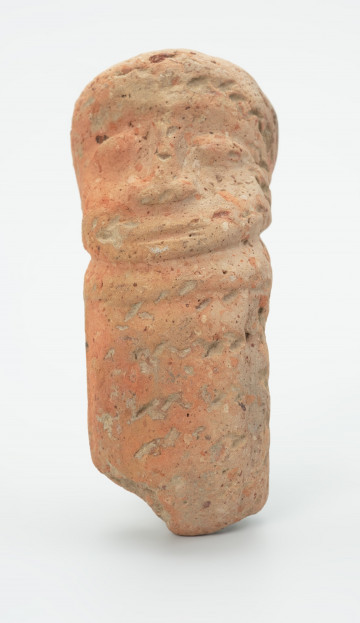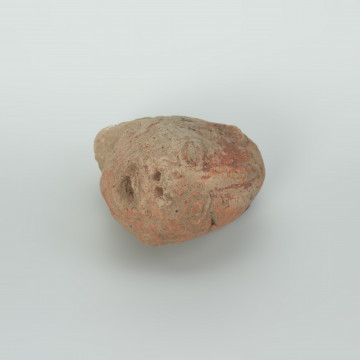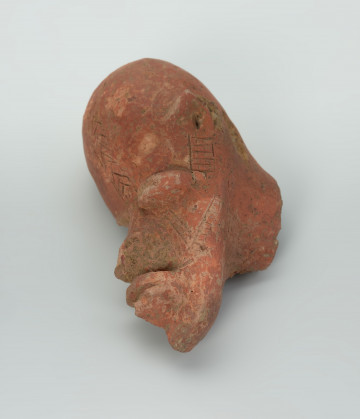
Figure
około 1480
National Museum in Szczecin
Part of the collection: Terracotta from the Niger
Terracotta items from Mali are found over a vast area and in various regions. They were discovered in abandoned towns and settlements scattered in the Niger Delta. The most characteristic site of terracotta sculptures is the ancient city of Djenne-Jeno (also called old Djenne or Djenne, Djenne-Djenno, Jenne-Jeno, or old Jeno), which was founded in the 3rd century BC. It is considered one of the oldest urban centres in sub-Saharan Africa. For unexplained reasons, it was abandoned in the 14th century. Djenne-Jeno was primarily famous for its carefully crafted anthropomorphic sculptures. When creating a sculpture, the artist tried to render every, even the smallest, detail of the figure. The sculptures usually reached 50 centimetres in height, and their bodies were richly decorated with geometrical patterns, jewellery and costumes. They were most likely banned after the Moroccan invasion of 1591. To the far west, towards Bamako, the Bankoni region has terracotta sculptures of a much simpler style, where decorations rarely appear or not at all. The Bankoni region became famous for its series of unique zoomorphic vessels, characterised by a very long neck. The origin and purpose of the terracotta sculptures from Mali are still the subjects of scientific research. Many specialists believe that they originally had religious and ceremonial functions. They were probably placed on domestic altars dedicated to ancestors. The presented object shows a clay round head with a characteristic herringbone pattern marked on the top. In this way, scarification was probably indicated.
Katarzyna Findlik-Gawron
Author / creator
Dimensions
cały obiekt: height: 5,8 cm, width: 5,2 cm
Object type
sculpture
Creation time / dating
Creation / finding place
Identification number
Location / status

około 1480
National Museum in Szczecin

około 1201 — 1985
National Museum in Szczecin

około 1201 — 1985
National Museum in Szczecin
DISCOVER this TOPIC
National Museum in Szczecin
DISCOVER this PATH
Educational path